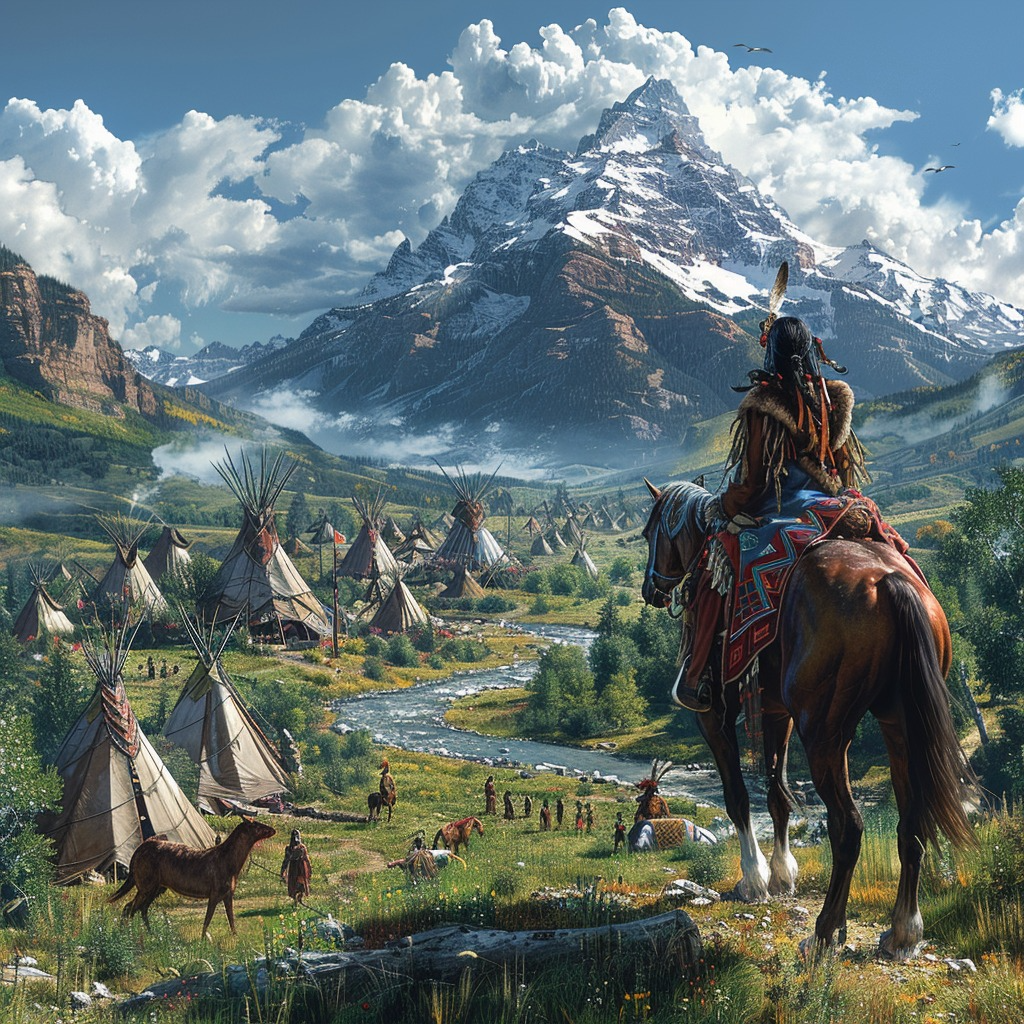Lakes have always held a special place in human culture, acting as serene settings for reflection, recreation, and community gathering. From the ancient myths that surround them to the present-day festivals held on their shores, lakes are both symbols of natural beauty and reservoirs of cultural heritage. In today's fast-paced world, there are still places where traditional practices and modern lifestyles harmonize beautifully by the lakeside, offering a unique blend of past and present.

In this article, we explore the cultural significance of lakes, visit lakeside communities that preserve and celebrate their traditions, and discover the activities and experiences that highlight this harmony. Join us on a journey to these tranquil waters where echoes of tradition resonate, inviting you to experience a unique way of life.
The Cultural Significance of Lakes
1. Lakes in Myth and Legend
Throughout history, lakes have been central to many myths and legends. In Celtic mythology, lakes were often seen as portals to other realms, home to mystical creatures and gods. The legendary Lady of the Lake, who bestowed King Arthur with the sword Excalibur, is a prime example of a lake's mythical significance.

In Hindu mythology, lakes like the sacred Pushkar Lake in India are considered holy and are sites for religious rituals and pilgrimages. These myths and legends reflect the deep spiritual connection that many cultures have with lakes, viewing them as sacred spaces that bridge the natural and supernatural worlds.
2. Historical Importance
Historically, lakes have played crucial roles in the development of civilizations. They provided water for drinking and irrigation, supported fishing communities, and facilitated trade and transportation. Lake Titicaca, straddling the border between Peru and Bolivia, is a significant cultural site for the indigenous people, believed to be the birthplace of the Inca civilization.

In Europe, the picturesque Lake Geneva has been a center of cultural and economic activity for centuries, attracting poets, writers, and artists inspired by its beauty. The historical significance of these lakes is evident in the rich traditions and practices that continue to thrive along their shores.
Preserving Traditions by the Lakeside
1. Lakeside Communities and Their Traditions
Many lakeside communities around the world have maintained their traditional practices, creating a living tapestry of cultural heritage. In the remote areas of Scandinavia, the Sami people continue their age-old practices of reindeer herding and fishing by the lakes. Their connection to the land and water is deeply embedded in their way of life, reflected in their music, clothing, and festivals.

Similarly, in Japan, the ancient practice of Ukai, or cormorant fishing, is still performed on the Nagara River. Fishermen use trained cormorants to catch fish, a tradition that dates back over a thousand years. These practices are not merely tourist attractions but vital parts of the community's identity and heritage.
2. Modern Adaptations
While these communities cherish their traditions, they also adapt to modern times in sustainable ways. For instance, the Sami have integrated modern technology to better manage reindeer herds while preserving their traditional knowledge. Eco-friendly tourism initiatives help support their lifestyle without disrupting the delicate balance of their environment.

In Japan, Ukai fishing has become a cultural event that draws visitors, blending the ancient practice with contemporary tourism. This harmony between old and new ensures that traditions remain relevant and appreciated by future generations.
Experiencing Harmony by the Lake
1. Traditional Activities for Visitors
Visitors to these lakeside communities can immerse themselves in traditional activities, gaining a deeper understanding of the local culture. In Scandinavia, tourists can join Sami guides on reindeer sleigh rides, learn about traditional fishing techniques, and participate in storytelling sessions around a campfire.

In Japan, tourists can experience Ukai fishing firsthand, watching skilled fishermen and their cormorants at work from a traditional wooden boat. Festivals celebrating these practices often feature music, dance, and local cuisine, providing a full cultural immersion.
2. Modern Amenities and Attractions
While these traditional activities are captivating, modern amenities ensure a comfortable and enjoyable visit. Eco-friendly resorts offer sustainable accommodation options, blending seamlessly into the natural landscape. Guided tours provide historical insights and ensure that visitors can appreciate the cultural significance of the sites.

Activities such as hiking, bird watching, and kayaking offer additional ways to connect with nature while learning about the region's history and traditions. This blend of traditional and modern attractions makes for a well-rounded and enriching travel experience.
Personal Stories and Testimonials
1. Voices from the Community
Hearing from the locals who live by these lakes provides a deeper appreciation of their way of life. Anna, a Sami reindeer herder, shares, "Our connection to the land and water is unbreakable. The lake gives us life and sustains our traditions. We are proud to share this with visitors and show them our world."

Similarly, Kenji, a cormorant fisherman in Japan, reflects on the importance of preserving his heritage, "Ukai is more than fishing; it's a bond between man, bird, and nature. We have kept this practice alive for generations, and it's a joy to see others appreciate it."
2. Visitor Experiences
Tourists often leave with lasting memories and a newfound respect for these traditions. Sarah, a visitor to a Sami community, recalls, "Participating in a reindeer sleigh ride and listening to Sami stories by the lake was magical. It was a beautiful blend of nature and culture that I'll never forget."

Mark, who experienced Ukai fishing, says, "Watching the cormorants dive and catch fish was incredible. It felt like stepping back in time, yet it was so well organized with modern comforts. Truly a unique experience."
Practical Information for Visitors
1. Getting There
Reaching these lakeside destinations is often an adventure in itself. For those interested in visiting the Sami communities in Scandinavia, flights to major cities like Tromsø or Kiruna followed by local transportation will get you there. Renting a car or joining a guided tour can make the journey easier and more scenic.

In Japan, Ukai fishing can be experienced in Gifu Prefecture, easily accessible by train from major cities like Tokyo and Kyoto. Local buses or taxis can take you to the fishing sites.
2. What to Do and See
There are countless activities and sights to enjoy at these lakeside locations. In Scandinavia, besides engaging with Sami traditions, you can explore stunning landscapes through hiking and wildlife tours. Don't miss the chance to try traditional Sami cuisine, which often features reindeer meat and locally foraged ingredients.

In Gifu, besides Ukai fishing, explore the historic streets of the nearby town, visit local museums, and indulge in regional delicacies. Accommodations range from traditional inns to modern hotels, ensuring a comfortable stay.
Conclusion
The harmony between tradition and modernity by the lake is a testament to the enduring power of cultural heritage and the beauty of nature. By preserving and celebrating these traditions, lakeside communities offer a unique and enriching experience for visitors.

Whether it's the Sami reindeer herders of Scandinavia or the cormorant fishermen of Japan, these communities invite us to witness and partake in their harmonious way of life. As you plan your next travel adventure, consider exploring these echoes of tradition by the lake and immerse yourself in the serene beauty and rich culture they offer.





